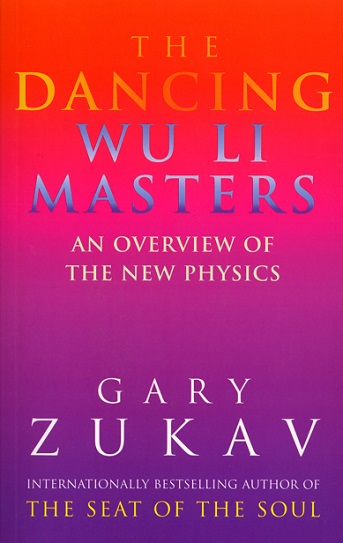|
home | what's new | other sites | contact | about |
|||
|
Word Gems exploring self-realization, sacred personhood, and full humanity
Quantum Mechanics
return to "Quantum Mechanics" main-page
website: https://seatofthesoul.com
Editor’s note: “Wu Li” is the Chinese word for physics; literally, “patterns of organic energy”
Excerpts from Gary Zukav's book: Although Newton’s physics could not account for phenomena in the microscopic realm, it continued to explain macroscopic phenomena very well… Newton’s laws are based upon observations of the everyday world. They predict events. These events pertain to real things like baseballs and bicycles. Quantum mechanics is based upon experiments conducted in the subatomic realm. It predicts probabilities. These probabilities pertain to subatomic phenomena. Subatomic phenomena cannot be observed directly. None of our senses can detect them… no one has ever seen an atom (much less an electron)… Newton's laws depict events which are simple to understand and easy to picture. Quantum mechanics depicts the probabilities of phenomena which defy conceptualization and are impossible to visualize… allow yourself to be open without making an effort to visualize anything. Werner Heisenberg, one of the founders of quantum physics, wrote, “The mathematically formulated laws of quantum theory show clearly that our ordinary intuitive concepts cannot be unambiguously applied to the smallest particles. All the words or concepts we use to describe ordinary physical objects, such as position, velocity, color, size, and so on, become indefinite and problematic if we try to use them of elementary particles.” The idea that we do not understand something until we have a picture of it in our heads is a by-product of the Newtonian way of looking at the world. If we want to get past Newton, we have to get past that… The idea that the atom is the indivisible building block of nature was proposed about four hundred years before Christ, but until the late 1800s it remained just an idea. Then physicists developed the technology to observe the effects of atomic phenomena, thereby "proving" that atoms exist. Of course, what they really proved was that the theoretical existence of atoms was the best explanation of the experimental data that anyone could invent at the time. They also proved that atoms are not indivisible, but themselves are made of particles smaller yet, such as electrons, protons, and neutrons. These new particles were labeled 'elementary particles" because physicists believed that, at last, they really had discovered the ultimate building blocks of the universe. The elementary particle theory is a recent version of an old Greek idea... The descent downward from the macroscopic level to the microscopic level, which we have been calling the realm of the very small, is a two-step process. The first step downward is to the atomic level. The second step downward is to the subatomic level. The smallest object that we can see, even under a microscope, contains millions of atoms. To see the atoms in a baseball, we would have to make the baseball the size of the Earth. If a baseball were the size of the Earth, its atoms would be about the size of grapes. If you can picture the Earth as a huge glass ball filled with grapes, that is approximately how a baseball full of atoms would look. The step downward from the atomic level takes us to the subatomic level. Here we find the particles that make up atoms. The difference between the atomic level and the subatomic level is as great as the difference between the atomic level and the world of sticks and rocks. It would be impossible to see the nucleus of an atom [even] the size of a grape. In fact, it would be impossible to see the nucleus of an atom [even] the size of a room. To see the nucleus of an atom, the atom would have to be as high as a fourteen-story building. The nucleus of an atom as high as a fourteen-story building would be about the size of a grain of salt. Since a nuclear particle has about 2,000 times more mass than an electron the electrons revolving around this nucleus would be about as massive as dust particles. The dome of Saint Peter’s basilica in the Vatican has a diameter of about fourteen stories. Imagine a grain of salt in the middle of the dome of Saint Peter’s with a few dust particles revolving around it at the outer edges of the dome. This gives us the scale of subatomic particles. It is in this realm, the subatomic realm, that Newtonian physics has proven inadequate, and that quantum mechanics is required to explain particle behavior. A subatomic particle is not a particle like a dust particle. There is more than a difference in size between a dust particle and a subatomic particle. A dust particle is a thing, an object. A subatomic particle cannot be pictured as a thing. Therefore we must abandon the idea of a subatomic particle as an object. Quantum mechanics views subatomic particles as “tendencies to exist” or “tendencies to happen.” How strong these tendencies are is expressed in terms of probabilities. A subatomic particle is a quantum, which means a [smallest] quantity of something. What that something is, however, is a matter of speculation. Many physicists feel that it is not meaningful even to pose the question. It may be that the search for the ultimate stuff of the universe is a crusade for an illusion. At the subatomic level, mass and energy change unceasingly into each other. Particle physicists are so familiar with the phenomena of mass becoming energy and energy becoming mass that they routinely measure the mass of particles in energy units...
|
|||
|
|

